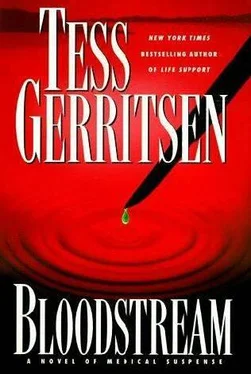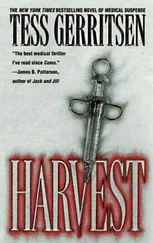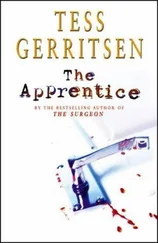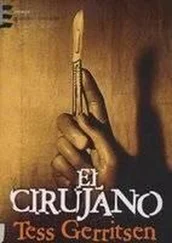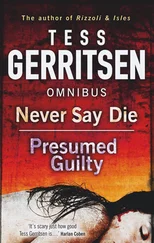She went back to the car and sat there for a long time with the engine running, the heater blowing. Snow continued to fall, just a dusting of it, fluttering soundlessly on the windshield. Saturday night was not Lincoln’s usual shift, so where was he? She thought of all the places he might be spending the evening, and the possibilities gnawed at her with cruel teeth. She wasn’t stupid; she knew that Fern Cornwallis had always had her predatory eye on Lincoln. There must be other women as well, dozens of women who’d find a cop in uniform irresistible. Agitation mounting, Doreen began to rock back and forth, moaning, in her seat. Come home, come home. Come back to me.
Even the heater wasn’t enough to ward off the chill seeping into her bones, into her soul. She longed for the warmth of brandy, for the welcome flush of alcohol in her veins. Then she remembered the clink of glass in the trunk. Please let it be something worth drinking. Something stronger than soda pop.
She staggered out of the car, went around to the rear, and opened the trunk. It took her a moment to focus her eyes, and even when she did, she wondered if she was hallucinating. So beautiful, so green. Like jars of emeralds glowing in the darkness. She started to reach down for one, then turned at the sound of a car engine.
Approaching headlights blinded her. Dazed, she put up her hand to shield her eyes.
A silhouette stepped out of the car.
Dr. Francis Clevenger was a man in miniature, small-boned, sparrowfaced, his lab coat drooping like a parent’s oversize raincoat on his frail shoulders. That, and his absolutely beardless face, made him seem far younger than he was. He looked more like a pale adolescent than a board-certified pathologist. With quick grace he rose from his chair to greet Claire and Warren Emerson’s neurosurgeon, Dr. Rothstein.
“These slides are so cool,” Clevenger said. “It was the last thing I expected to see. Go on, take a look!” He pointed to the dual-headed teaching microscope.
Claire and Rothstein sat on opposite sides of the scope and leaned into the eyepieces.
“So what do you see?” asked Clevenger, practically dancing beside them in anticipation.
“A mixture of cells,” said Rothstein. “Astrocytes, I’d guess. Plus what looks to me like an interweaving of scar tissue.”
“That’s a start. Dr. Elliot, you see anything worth noting?”
Claire focused her eyepiece and gazed at the field of tissue. She was able to identify most of the cells, based on what she remembered from medical school histology classes years before. She recognized star-shaped astrocytes, and the presence of macrophages-the cleanup crew, whose function is to tidy up after infection. She also saw what Rothstein had noticed: there were swirls of granulation tissue or scarring, possibly the aftermath of acute inflammation.
Reaching for the slide position knob, she shifted the field, scanning new cells.
An unfamiliar pattern appeared under her gaze, a swirl of fibrous matter several cells thick, forming a microscopic rind of tissue. “I see encapsulation here,” she said. “A layer of scar tissue. Is this a cyst, maybe? Some sort of infectious process that his immune system managed to wall off and encase?”
“You’re getting warm. Remember the CT scan?”
“Yes. It looked like he had a discrete brain mass, with calcifications.”
“An MRI was done here after transfer,” said Rothstein. “It showed essentially the same thing. A discrete lesion, encapsulated, with calcifications.”
“Right,” said Clevenger. “And what Dr. Elliot has just identified is the cyst wall. Scar tissue formed by the body’s immune system, surrounding and closing off the infection.”
“Infection by what organism?” asked Rothstein, raising his head to look at Clevenger.
“Well, that’s the mystery here, isn’t it?”
Slowly Claire moved the slide, shifting the field again. What appeared through her eyepiece was so startling her gaze froze in amazement. “What on earth is this?” she said.
Clevenger made a sound of almost childish delight. “You found it!”
“Yes, but I don’t know what it is.”
Rothstein pressed his face back to the eyepiece. “My god. I don’t know what it is, either.”
“Describe it for us, Dr. Elliot,” said Clevenger.
Claire was silent for a moment as she shifted the position knob and slowly scanned the field. What she saw was a strangely twisted architecture, partially calcified. “It’s some sort of degraded tissue. I don’t know if this is all artifact or what-it’s as if some organism collapsed into an accordion shape, and then became petrified.”
“Good. Good!” said Clevenger. “I like that description-petrified. Like a fossil.”
“Yes, but of what?”
“Back off, look at the larger picture.”
She reduced magnification, trying to get an overall view. The shape took more complete form, became a spiral that had ‘folded upon itself. The realization of what she was looking at made her straighten in shock and stare at Clevenger.
“It’s some sort of parasite,” she said.
“Yeah! And isn’t it cool?”
“What on earth was a parasite doing in my patient’s brain?” said Rothstein.
“It’s probably been there for years. Invaded the gray matter, caused a temporary encephalitis. The immune system launched an inflammatory response. You get an influx of white blood cells, eosinophils, everything the host can muster to fight back. Eventually the host wins, and his body walls off the critter, encases it in granulation tissue, forming a sort of cyst. The parasite dies.
Parts of it become calcified-petrified, if you will. Years later, that’s what you have left.” He nodded at the microscope. “A dead parasite, trapped in an envelope of scar tissue. It’s probably the reason behind his seizures. The mass effect of that little pocket of dead worm and scar.”
“What parasite are we talking about?” asked Claire. “The only one I can think of that invades the brain is cysticercus.”
“Exactly. I can’t conclusively identify this species-it’s too far degraded. But this is almost certainly the disease cysticercosis, caused by the larva of Taenia solium. The pork tapeworm.”
Rothstein looked disbelieving. “I thought Taenia solium was only found in underdeveloped countries.”
“For the most part it is. You’ll find it in Mexico, South America, sometimes in Africa and Asia. That’s why I was so excited when I saw that slide. To find a case of cysticercosis here, in northern Maine, is unbelievable. It’s definitely worth an article in The New England Journal of Medicine. What we need to figure out is when and where he got exposed to pork tapeworm eggs?’
“There’s nothing in his history about foreign travel,” said Claire. “He told me he’s lived all his life in this state.”
“Which would make it a truly unusual case. I’ll run antibody tests to confirm this is the right diagnosis. If it is Taenia solium, he’ll have a positive ELISA test on his serum and CSE Is there any history of an initial inflammatory response? Symptoms that might tell us when he was first infected?”
“What symptoms, specifically?” asked Rothstein.
“It could be a clinical picture as dramatic as full-blown meningitis or encephalitis. Or new onset epilepsy.”
“His first seizures occurred sometime before age eighteen”
“That’s one clue.”
“What other symptoms might show up?”
“Subtler signs, possibly. It can mimic brain tumors, cause a variety of psychiatric disorders.”
The back of Claire’s neck was suddenly tingling. “Violent behavior?” she asked.
“Possibly,” said Clevenger. “I didn’t see that specifically mentioned in my references. But it could be a sign of acute illness.”
Читать дальше
Конец ознакомительного отрывка
Купить книгу
